See ospreys and 300-year-old trees on a pair of family-friendly hikes in Portsmouth
PORTSMOUTH — Readers have asked for recommendations for short, easy, flat trails to start the summer hiking season, and I recently found two public preserves where walkers can explore nature, along with Rhode Island’s earliest history.
The sights you’ll see include ospreys in flight, a seashell-covered beach and 300-year-old beech trees towering above a historic “gentleman’s farm.”
The trails, which are managed by the Aquidneck Land Trust, are close to each other, and you can do both in a few hours.
Enjoy!
Walking RI: NY philanthropist willed his 1,800-acre estate to RI in 1937 as a sanctuary
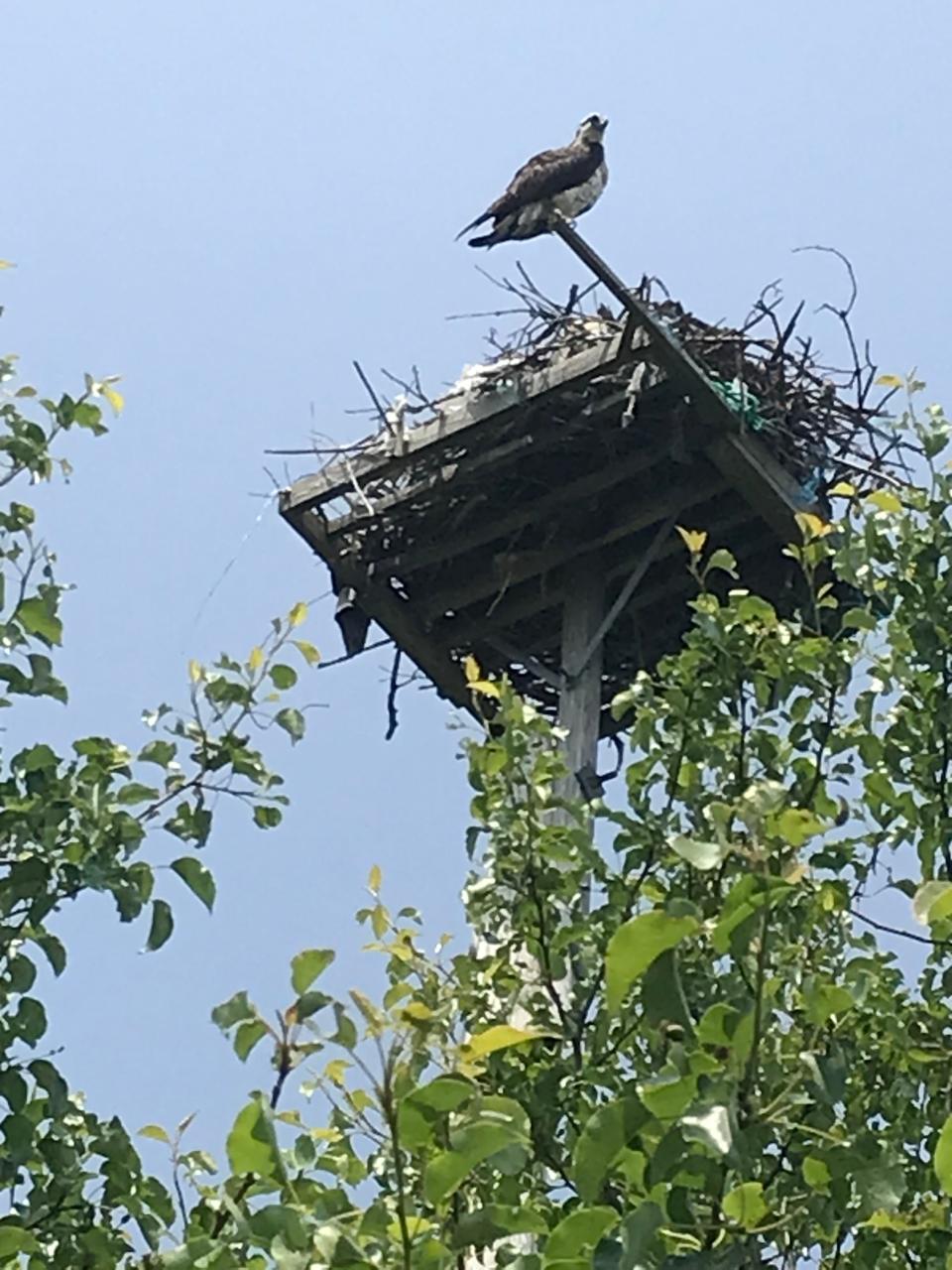
Town Pond Trail: Ospreys and other birds, and a historic milestone
Three huge osprey nests rest high atop telephone poles on the banks of Town Pond, also called Salt Pond, which fills from a channel from Mount Hope Bay.
But to see the fish hawks up close, you have to follow a wide, grassy path through a preserve that runs from a small unmarked lot off Anthony Road.
The trail starts out between high walls of shrubbery filled with songbirds. The first osprey nest appears high above a reed-covered marsh on the left, but after a long look, I didn’t spot any ospreys.
A short distance later, the path opens up, providing a good view of Town Pond on the right and Founders Brook on the left, with houses in the distance. An electric transmission line crosses above the path and runs across the water and along the east side of the pond.
Hiking: These 10 Rhode Island trails should be on your bucket list
Walking RI: Hike near the Charlestown hatchery that once helped stock trout across Northeast.
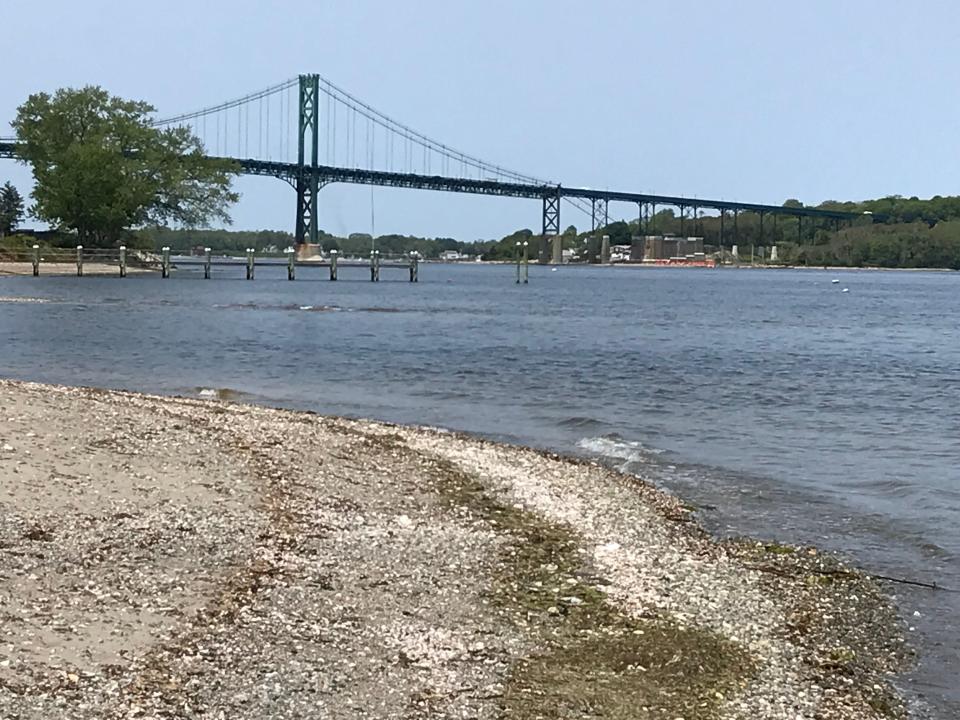
The trail continues along the west bank of the pond on a raised berm that once may have been a farm road leading to railroad tracks along the coast. I spotted a trestle over a channel in the distance to the right.
Continuing, I saw the second osprey nest built on a platform above the trail on the left. As I passed below, a huge fish hawk studied me from a perch on a branch extending from the large nest. The osprey then took off and soared high in the sky above the pond, hunting for prey. I also noted many other birds lived on the underside of the nest.
The path reached a set of old rusted railroad tracks, and I turned right to cross a 30-foot trestle across a channel. (Be careful of the wide gaps between the railroad ties.) On the other side, a path on the left ran down to barren mud flats, pocked with nickel-sized holes that hid fiddler crabs, and an extensive tidal salt marsh in the Bertha Russell Preserve.
I followed a muddy path along the channel and watched a kayaker paddling from the bay and under the trestle to the pond. The path reaches a beach covered with a deep bed of snow-white seashells. There are clear views of the Mount Hope Bridge to the left and Roger Williams University and Mount Hope Farm across the Bay.
Summer Bucket List: How to make the most out of summers in Rhode Island
Walking RI: Former RI governor's estate Canonchet Farm is a great nature classroom for a family hike

Site of Anne Hutchinson settlement that became Portsmouth
I learned later that the first Colonial settlers landed here in 1638, and Anne Hutchinson and others established a settlement that became Portsmouth. In the 1950s, the area was a dumping ground for dredging spoils from as far away as Fall River, and phragmites, a brush growth, took over the marsh.
In 2008, the U.S. Army Corps of Engineers, Save The Bay, the Town of Portsmouth, Aquidneck Land Trust and the Rhode Island Department of Environmental Management completed a three-year project that restored the 46-acre site, estuary and habitat. Aquidneck Land Trust has an easement on the DEM-owned property.
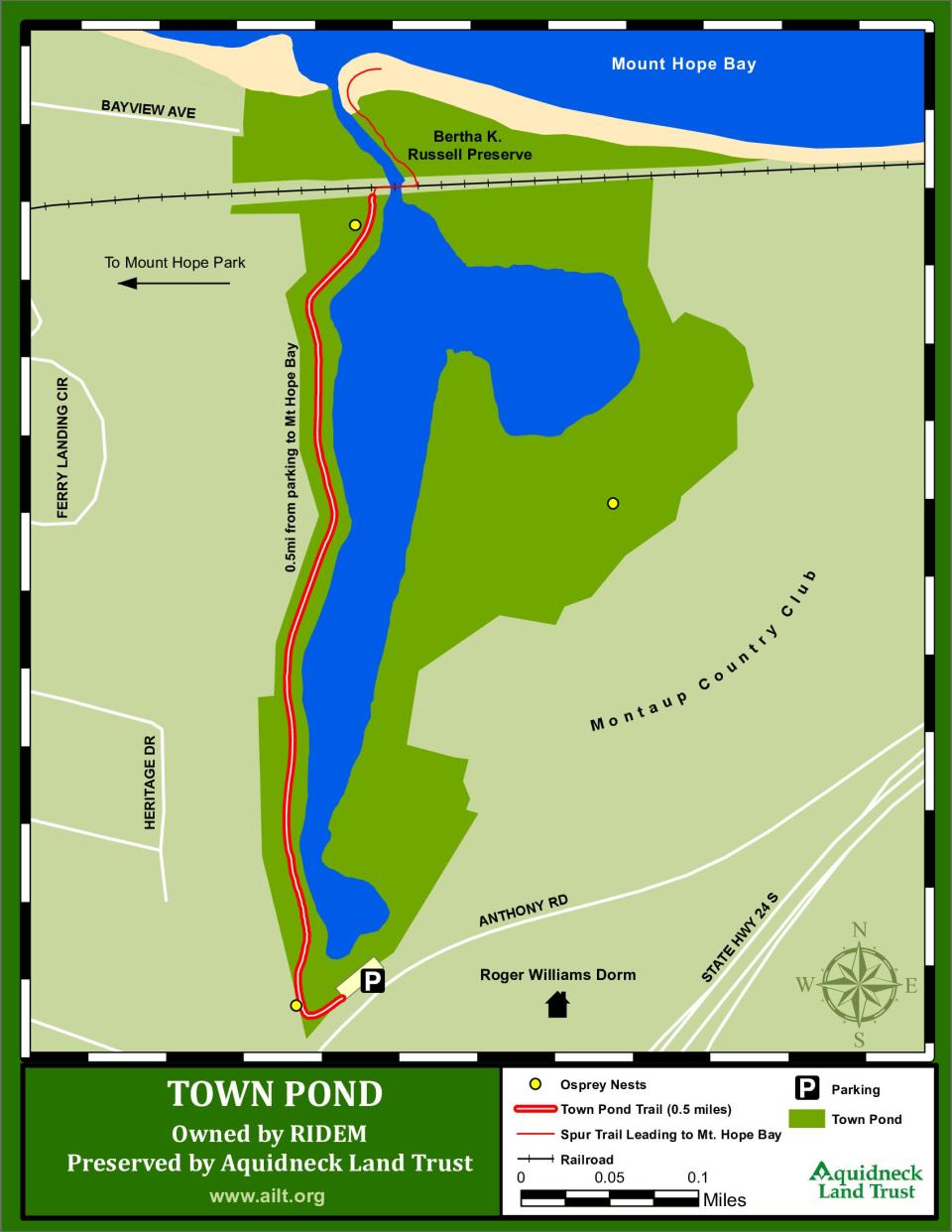
After enjoying the sea breeze off the bay on a warm, sunny morning, I turned and retraced my steps on the out-and-back trail. From the trestle, I saw the third nest across the pond on the left, with an osprey circling above. On the way back, I spotted a cardinal and a goldfinch, a lone swan swimming in the pond and egrets foraging along the banks. Other hikers have reported seeing hawks, owls and blue herons.
I returned to the trailhead after walking 1.1 miles for an hour on a perfect path for first-time hikers, families and anybody else who enjoys nature, wildlife and history.
Walking RI: Rediscover Hopkinton's beautiful Blue Pond from three lesser-known trails
If you go: Town Pond
Access: Off Route 24, take Anthony Road southwest. The trailhead is on the right, across from the lot for Baypoint Residence Hall.
Parking: Available at a small lot.
Dogs: Allowed but must be leashed
Difficulty: Easy
GPS Coordinates: 41.63061, -71.24579
Oakland Forest and Meadow Trail: The majesty of 300-year-old trees
Giant, majestic 300-year-old American beech trees stretch to the sky along the Oakland Forest and Meadow Trail.
The ancient beeches, which can be identified by their twisted and antler-shaped branches at the top, stand in one of the few remaining old-growth forests in Rhode Island. (Old growth is defined as mature trees older than 150 years or untouched since the European settlers arrived.)
The forest was saved from being cut down for a condominium project in 2000 by a grassroots campaign by neighbors, conservation-minded community members, donors and the Aquidneck Land Trust.
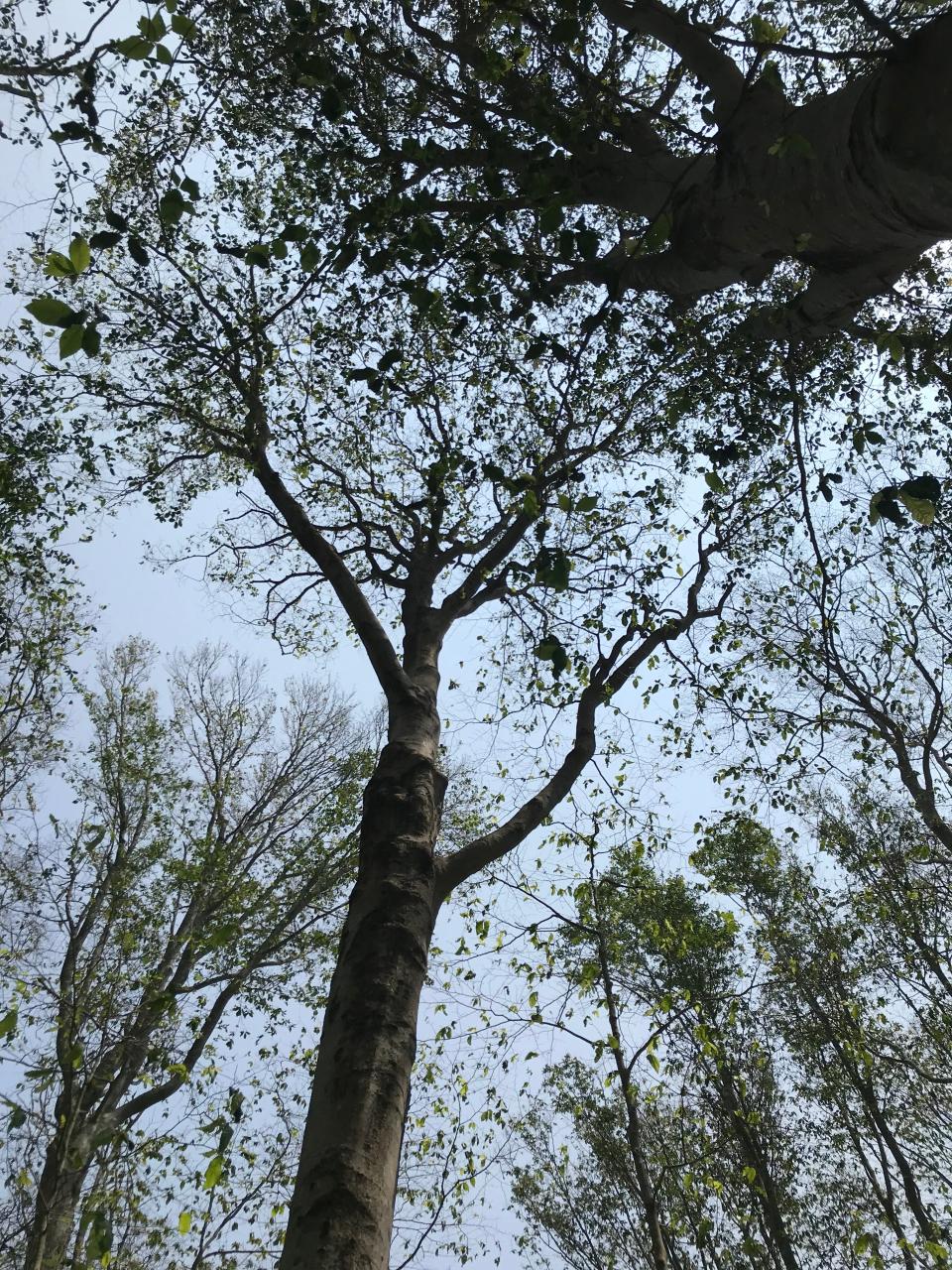
More: One RI man's quest to find old-growth forests and his mission to protect century-old trees
I set out to find the trees from a trailhead kiosk that included a map and a history of the 30-acre preserve. The path crossed a wooden footbridge, surrounded by pussy willows and thick shrubbery, over a freshwater wetland.
In a few steps, the path opened to a 10-acre meadow that is cut once a year to maintain the natural habitat, which includes native wildflowers, grasses, ferns and invasive species such as multiflora rose.
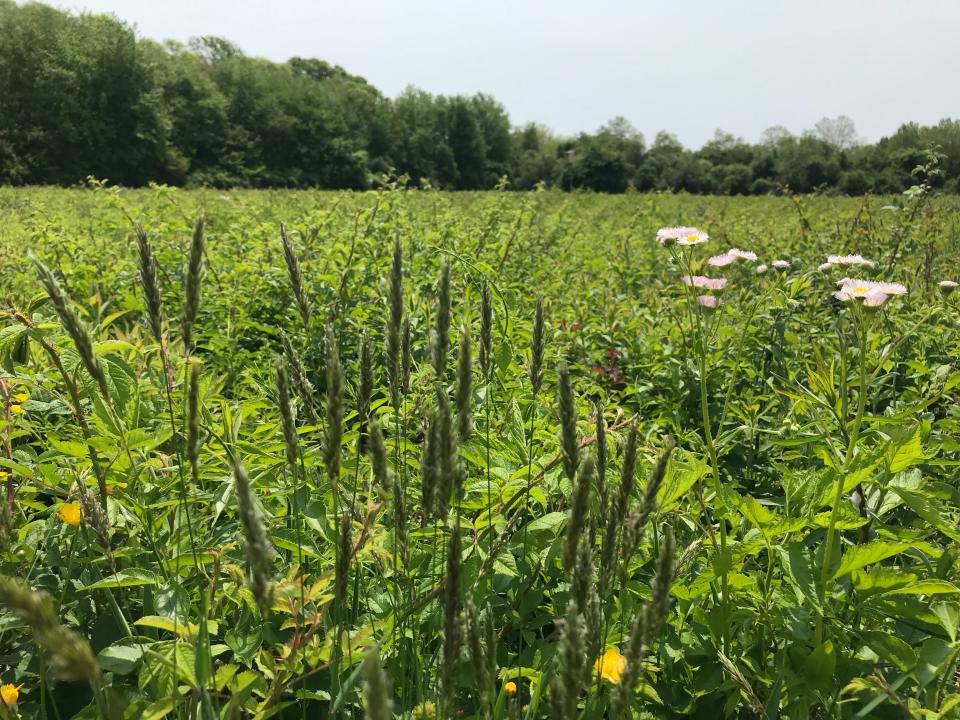
Several small bird boxes stand on poles; built for Eastern bluebirds, they have been taken over by tree swallows. A newly installed bat box is near the back of the fields. St. Mary’s Pond is to the west.
From there, the path runs left, half-circles the fields and crosses a long line of timber bridges laid over squishy grasslands. On the northwest side of the meadow, man-made wetlands were designed to improve water quality by directing stormwater and other water sources that pass through the watershed around St. Mary’s Pond, one of seven drinking water reservoirs for Aquidneck Island.
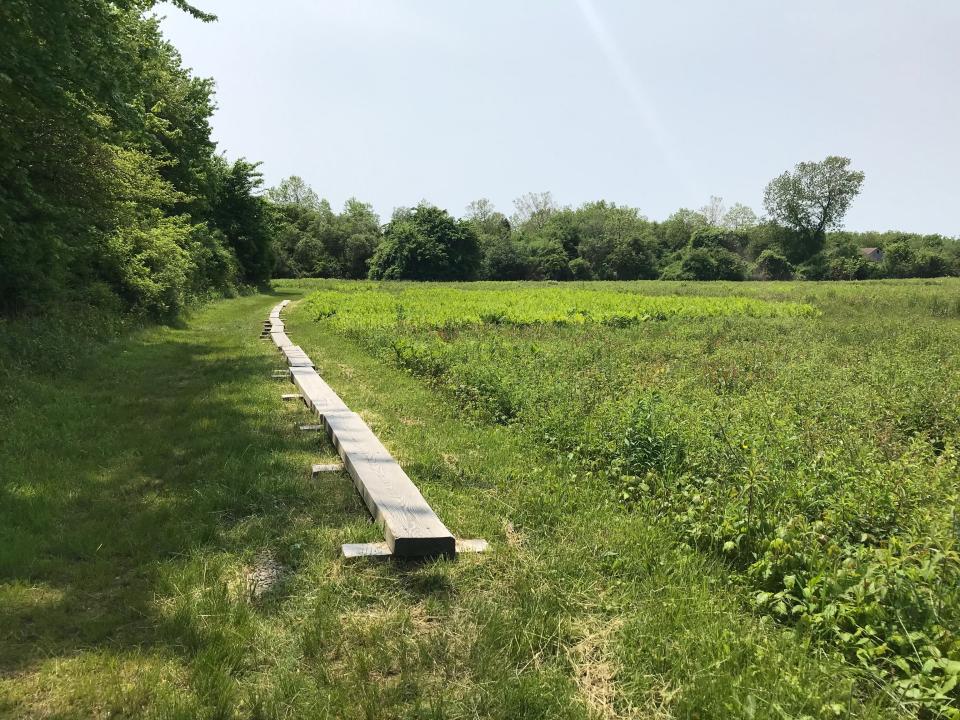
Why were these trees never logged?
The trail leads to a kiosk that explains why the land was never logged: It served as a retreat for wealthy owners for several centuries.
According to Portsmouth historian James Garman, the property and trees, which date to pre-Colonial times, were owned in the late 1700s by two Newport merchants who ran the Gibbs and Channing shipping firm. In the 1800s, the land transferred to William Ellery Channing, of Boston, a prominent minister, lecturer and writer, who used it as a summer retreat.
In 1867, August Belmont, a New York financier, owed the estate and conveyed it to Cornelius Vanderbilt II, who left it to his son, Alfred Gwynne Vanderbilt, a world-renowned horseman. Alfred built stables, a horse ring and barns to create one of the area’s “gentleman’s farms,” including Glen Farm and Sandy Point Farm.
Walking RI: Stroll through industrial history in Slatersville, America's first planned mill village

His son inherited the estate and later sold it to Robert Young and his wife, Anita O’Keefe Young, who razed the Colonial farmhouse and barns in the late 1940s. Their heirs sold the land in 1984 to a condo developer. The Aquidneck Land Trust stepped in, took over the property in 2000 and saved the trees.
With that history in mind, I crossed a wooden bridge, entered the forest and set out on a half-mile white-blazed loop. I soon spotted what I came for: a 20-acre natural tract of old-growth white oak and beech trees, some with twisted trunks and antler-shaped branches that reached into the sky. The beech trees have smooth gray bark, while some of the old oaks have bent trunks and branches. Red maple, yellow birch and black gum trees are mixed in.
In 2000, a tree coring done by taking a sliver-sized sample of the trunk to count the rings estimated the trees were 200 to 300 years old.
I noted that the trees’ thick canopy of leaves blocks out sunlight and stunts the growth of underbrush. I also noticed that some beech trees in one section had been trimmed to remove dead or cracked limbs that hung dangerously over the trail.
Walking RI: Discover why hikers and anglers love the 'wild and scenic' Beaver River
Walking RI: This Hopkinton RI trail was featured in Wes Anderson's 'Moonrise Kingdom'
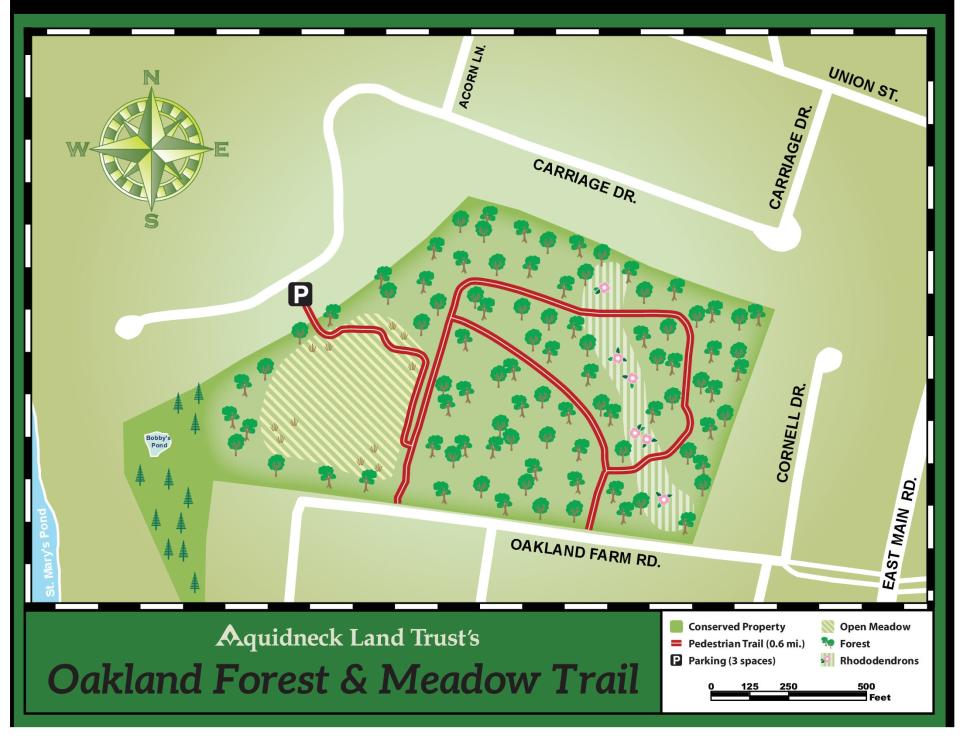
Old-growth beeches face a new threat: Disease
Alex Chuman, the land trust's conservation director, told me that beech bark disease and beech leaf disease are rampant in the forest and have already damaged parts of the canopy. The disease has devastated other beech forests along the East Coast.
Chuman said the land trust is working with a forester to develop a plan to manage the forest, especially as damage from the disease continues.
I decided to explore and took a side path to an overgrown cement-block structure that was once an icehouse. It was one of few structures I found. Back on the main loop, I passed through a corridor of white-flowered rhododendrons, planted more than 100 years ago by an estate owner.
Walking RI: See rugged coastline and 100-year-old ruins at Narragansett's Black Point
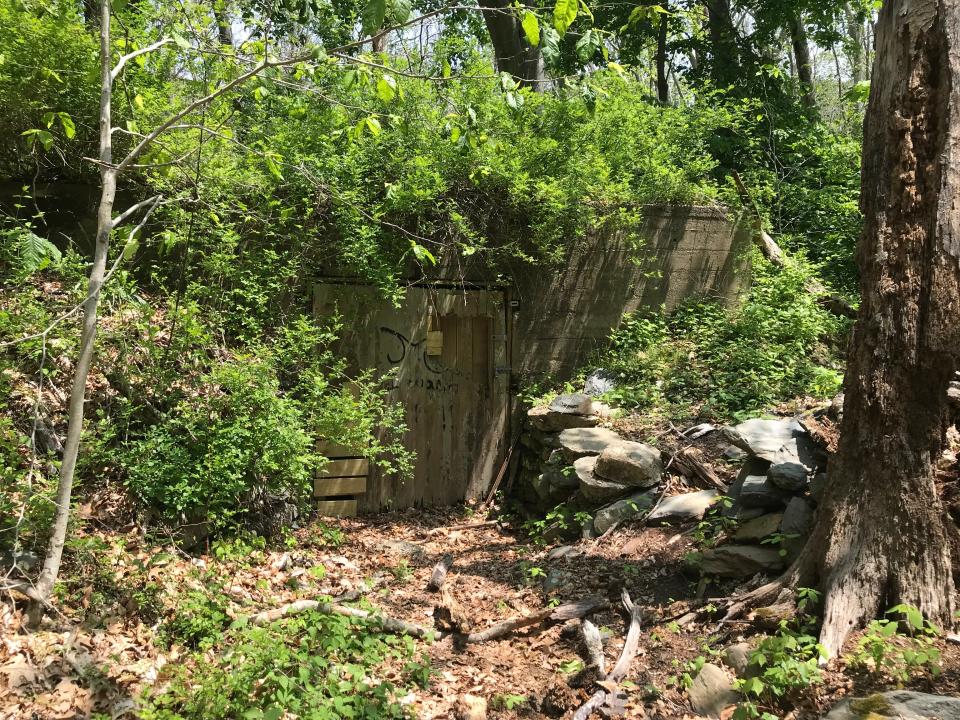
Up ahead, the trail ran through the other side of the swath of thick rhododendrons and passed a stone bench, inscribed for Ann F. Masse (1955-2003), a neighbor and member of the coalition that saved the trees. The path continued over a bridge to a wider trail of crushed stone that may have once been a farm lane. I returned to the kiosk on the edge of the meadow and retraced my steps to the trailhead. In all, I walked 0.8 miles on the main trail and several side spurs.
Hikers report seeing turkeys, coyotes, hawks, woodpeckers and waterfowl in the preserve, but I was there for the old-growth trees.
They are a sight to see, and I hope they last forever.
If you go: Oakland Forest and Meadow Trail
Access: Off East Main Road, turn west on Union Street. Take your first left on Carriage Drive and go 0.4 miles to the trailhead on the left.
Parking: Available in a small lot.
Difficulty: Easy.
Dogs: Not allowed.
Trailhead GPS: 41.55702, -71.26357
Trail Tip: Learn more about old-growth trees
The Rhode Island Old Growth Tree Society, a nonprofit group, has identified 56 pockets of old-growth trees scattered across the state. The Oakland Forest was the first in Rhode Island to be entered into the national Old Growth Forest Network.
The Walking Rhode Island column runs every other Sunday in The Providence Journal's Rhode Islander pages. John Kostrzewa, a former assistant managing editor at the Providence Journal, welcomes email at johnekostrzewa@gmail.com.
This article originally appeared on The Providence Journal: Family-friendly hikes in RI: Two short, scenic trails in Portsmouth

